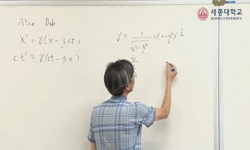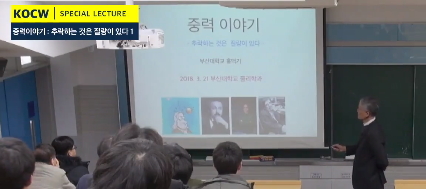Ring-like residual deposits are often observed after drying suspension droplets on surfaces. That introducesa crucial defect in practical applications, such as ink-jet printing that requires a uniform deposit. In this study, depositions after drying s...
http://chineseinput.net/에서 pinyin(병음)방식으로 중국어를 변환할 수 있습니다.
변환된 중국어를 복사하여 사용하시면 됩니다.
- 中文 을 입력하시려면 zhongwen을 입력하시고 space를누르시면됩니다.
- 北京 을 입력하시려면 beijing을 입력하시고 space를 누르시면 됩니다.



Gravity effect of silica and polystyrene particles on deposition pattern control and particle size distribution on hydrophobic surfaces
한글로보기https://www.riss.kr/link?id=A108462373
-
저자
Ting-Yu Hu (National Taiwan University) ; Chieh Wang (National Taiwan University) ; Kai-Chieh Yang (National Taiwan University) ; Li-Jen Chen (National Taiwan University)
- 발행기관
- 학술지명
- 권호사항
-
발행연도
2022
-
작성언어
English
- 주제어
-
등재정보
KCI등재,SCOPUS,SCIE
-
자료형태
학술저널
- 발행기관 URL
-
수록면
214-224(11쪽)
- 제공처
-
0
상세조회 -
0
다운로드
부가정보
다국어 초록 (Multilingual Abstract)
Ring-like residual deposits are often observed after drying suspension droplets on surfaces. That introducesa crucial defect in practical applications, such as ink-jet printing that requires a uniform deposit.
In this study, depositions after drying sessile/pendant droplets with silica/polystyrene particles wereexamined to identify the effect of gravitational sedimentation of particles on self-pinning and depositionpattern. The suspension droplet with larger polystyrene (or silica) particles would trigger the self-pinningat larger (or smaller) particle concentrations. The deposition pattern of pendant drops with silica particlesis hill-like. This is due to the large density difference between silica and water to induce high sedimentationvelocity, and the particles would precipitate and aggregate along the air–liquid interface to form ahollow shell deposit. The depositions for suspensions with bi-dispersed particles, the larger silica particleswould accumulate at the bottom of the deposit due to the higher sedimentation velocity, in contrastto the well-mixed in the deposits for bi-dispersed polystyrene particles. The sedimentation and capillaryflow velocities were calculated and discussed. These new findings reveal that the particle density (gravityeffect) can be used to adjust the sedimentation velocity to control the deposition morphology and particlesize distribution even to suppress the coffee-ring effect.
1 C. Jiang, 8 : 26162-, 2016
2 E. Homede, 30 : 2005486-, 2020
3 D. Soltman, 24 : 2224-, 2008
4 M. Parsa, 31 : 3354-, 2015
5 X. Shen, 114 : 5269-, 2010
6 H. H. Lee, 105 : 230-, 2017
7 Y. Liu, 13 : 2042-, 2019
8 R. Dugyala, 30 : 8680-, 2014
9 E. Homede, 9 : 5226-, 2018
10 R. Bhardwaj, 11 : 2009
1 C. Jiang, 8 : 26162-, 2016
2 E. Homede, 30 : 2005486-, 2020
3 D. Soltman, 24 : 2224-, 2008
4 M. Parsa, 31 : 3354-, 2015
5 X. Shen, 114 : 5269-, 2010
6 H. H. Lee, 105 : 230-, 2017
7 Y. Liu, 13 : 2042-, 2019
8 R. Dugyala, 30 : 8680-, 2014
9 E. Homede, 9 : 5226-, 2018
10 R. Bhardwaj, 11 : 2009
11 P.J. Yunker, 110 : 2013
12 W. Ristenpart, 99 : 2007
13 A. Shelemin, 367 : 165-, 2019
14 J. -L. Zhuang, 469 : 90-, 2019
15 D. Mampallil, 252 : 38-, 2018
16 M. S. Fleischman, 206 : 3923-, 2012
17 M. A. Hampton, 377 : 456-, 2012
18 R. Blossey, 18 : 2952-, 2002
19 F. Zabihi, 12 : 711-, 2015
20 E. Maleki, 405 : 2021
21 H. Lian, 499 : 2020
22 R. D. Deegan, 389 : 827-, 1997
23 H. Hu, 106 : 1334-, 2002
24 R. D. Deegan, 61 : 475-, 2000
25 K. Uno, 276 : 810-, 1998
26 T. A. Nguyen, 117 : 4707-, 2013
27 T. S. Wong, 83 : 1871-, 2011
28 V. H. Chhasatia, 7 : 10135-, 2011
29 K. C. Yang, 579 : 212-, 2020
30 N. R. Devlin, 62 : 947-, 2016
31 I. Sandu, 358 : 621-, 2011
32 A. P. Sommer, 108 : 8096-, 2004
33 W. Li, 35 : 113-, 2019
34 A.G. Marin, 107 : 2011
35 R.D. Deegan, 62 : 756-, 2000
36 H. Hu, 21 : 3963-, 2005
37 Y.O. Popov, 71 : 2005
38 S. Y. Lin, 119 : 3050-, 2015
39 L. J. Chen, 346 : 241-, 2001
40 K. S. Rao, 289 : 125-, 2005
41 K. Y. Yeh, 25 : 14187-, 2009
42 K. Y. Yeh, 24 : 245-, 2008
43 R. Bhardwaj, 26 : 7833-, 2010
44 Wen Ling Zhang ; 최형진 ; 고현석 ; 권계시, "Ink-jetting and rheological behavior of a silica particle suspension" 한국공업화학회 22 : 120-126, 2015
45 Chao-Jen Wang ; Wei-Fan Kuan ; Hui-Ping Lin ; Yury A. Shchipunov ; Li-Jen Chen, "Facile hydrophilic modification of polydimethylsiloxane-based sponges for efficient oil–water separation" 한국공업화학회 96 : 144-155, 2021
46 김지혜 ; 심원미 ; 조성민 ; 우상혁, "Evaporation driven synthesis of supraparticles on liquid repellent surfaces" 한국공업화학회 95 : 170-181, 2021
47 Xinlin Li ; Hyeok-jin Kwon ; Xueqin Zhang ; Ho Kwang Choi ; Sooman Lim ; Tae-Wook Kim ; Se Hyun Kim, "Direct-patterned copper/poly(ethylene oxide) composite electrodes for organic thin-film transistors through cone-jet mode by electrohydrodynamic jet printing" 한국공업화학회 85 : 269-275, 2020
동일학술지(권/호) 다른 논문
-
The synthesis and applications of TiO2 nanoparticles derived from phytochemical sources
- 한국공업화학회
- Jagannath Roy
- 2022
- KCI등재,SCOPUS,SCIE
-
A review on graphene oxide effect in energy storage devices
- 한국공업화학회
- DURAISAMI DHAMODHAR-AN
- 2022
- KCI등재,SCOPUS,SCIE
-
Surface nanobubbles and their roles in flotation of fine particles – A review
- 한국공업화학회
- Chenwei Li
- 2022
- KCI등재,SCOPUS,SCIE
-
- 한국공업화학회
- 팔렘
- 2022
- KCI등재,SCOPUS,SCIE




 KCI
KCI






